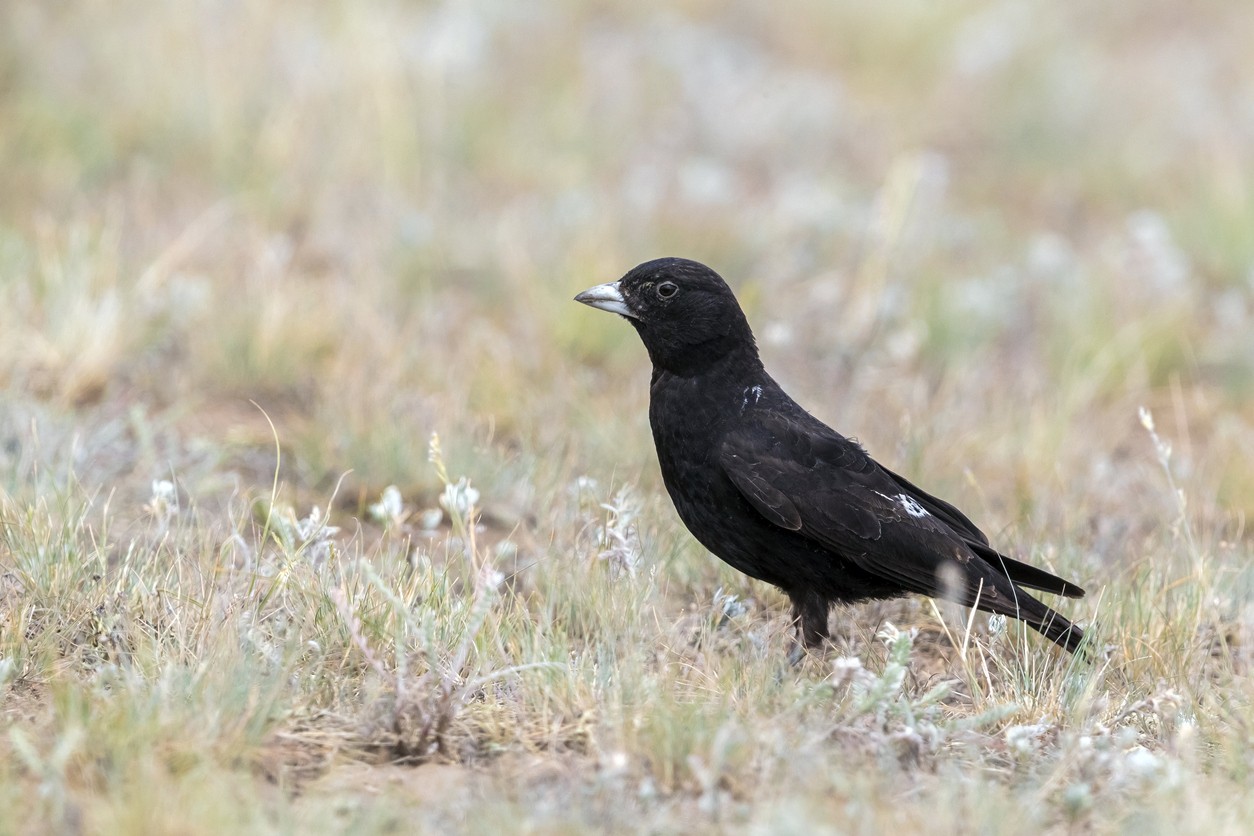Black Lark
A species of Black and Black-necked Larks Scientific name : Melanocorypha yeltoniensis Genus : Black and Black-necked Larks
Black Lark, A species of Black and Black-necked Larks
Botanical name: Melanocorypha yeltoniensis
Genus: Black and Black-necked Larks
Content
Description General Info

Description
This is a large, robust lark, 18–20.5 cm (7.1–8.1 in) in length. The adult male is unmistakable, being all black with some pale feather fringes on its back, and with a yellowish or pink bill. The female is undistinguished in comparison, mainly dark-blotched grey above and paler below. Her legs and underwing are black. The song is like a frantic version of that of Eurasian skylark. 
Size
20 cm
Nest Placement
Ground
Feeding Habits
Black Lark primarily consumes invertebrates in summer, such as beetles and orthopterans, and also feeds on seeds and plants like Polygonum. In winter, black Lark's diet consists exclusively of seeds. Foraging behavior includes ground feeding, flocking post-breeding, and digging or tunneling through snow to access seeds.
Habitat
The habitat of black Lark predominantly comprises steppes, which are grasslands characterized by plants like Artemisia, Stipa, and Festuca. These birds favor areas that have occasional shrubbery and may often be found in moist areas within these grasslands. Additionally, black Lark inhabits saline semi-desert regions that contain patches of steppe-like vegetation.
Dite type
Granivorous
General Info
Feeding Habits
Bird food type
Behavior
Its nest is on the ground, with 4–5 eggs being laid. Food is seeds and insects, the latter especially in the breeding season. It is gregarious in winter. 
Distribution Area
This is a bird of open steppe, often near water. It is partially migratory, with birds from the northwest of its breeding range moving south-east to winter further into Russia and neighbouring countries, as far as the northern Black Sea coasts in southern Ukraine. The black lark is a very rare vagrant away from its breeding range, with records during both spring and autumn passage periods, and also in winter; the following is a complete list of European records away from the breeding range and normal wintering range as of 2005. 1803 Italy. A male at Alessandria, Piedmont, on an unknown date in autumn 19th Century Austria. Three males, one shot, at Breitensee, Vienna, on an unknown date between 1857 & 1874 1874 North Sea. A female on Heligoland (then British) on 27 April 1892 North Sea. A male on Heligoland (then German) on 27 July 1897 Moldova. One in March 1900 Romania. One in Dobruja in March 1914 Turkey. One at Küçükçekmece, Istanbul, on 14 October 1929 Malta. One in winter 1930 Greece. One at Athens in spring 1958 Greece A male at Athens on 20 April 1961 Italy. One at Manfredonia, Apulia, on 3 May 1963 Greece. A flock of eight at Lake Koronia on 20 February 1964 Greece. Two at the Axios Delta on 8 February 1981 Czech Republic. A male at Zakupy on 28 November 1984 Great Britain. (England) A male at Spurn, Yorkshire on 27 April 1988 Poland. One at Kosienice on 17 January 1989 Finland. A male at Joensuu on 24 March 1989 Finland. A male at Korpo on 8 April 1993 Sweden. A male at Karlstad on 6 & 7 May 1995 Bulgaria. A female at Cape Kaliakra on 25 May 2003 Great Britain. (Wales) A male at RSPB South Stack, Anglesey from 1 to 8 June An individual was also recorded on an unknown date (prior to 2003) in Lebanon. 

